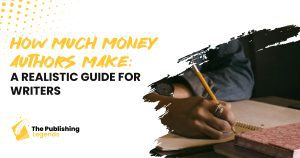How to Write a Non-fiction Book: A Comprehensive Guide
Due to its grounded nature, nonfiction writing is usually easier than creating fiction. But to write a powerful nonfiction book, one should follow strict, concrete rules and tactics. Every step—right from selecting your topic to how you tell the story—matters at the core of every valuable piece of work. This guide outlines some of the key steps you need to follow to publish a successful nonfiction book that meets your reader’s expectations.
Planning Your Non-fiction Book
1. Define Your Purpose
Before diving into the writing process, you must be clear about your objectives. Ask yourself:
- What message or information do you want to convey?
- What action, thought, or feeling do you want to evoke in your readers?
Whether your goal is to educate, motivate, or even entertain, your purpose will define all other aspects of your book. For example, if you’ve decided to write a self-help book, your purpose could be to outline a program for deep spiritual transformation.
2. Understand the Subgenre of Nonfiction
Nonfiction encompasses a broad spectrum of subgenres, each requiring a different approach:
- Narrative Nonfiction: Real-life stories written with literary techniques.
- Expository Nonfiction: Textbooks, manuals, or academic guides that focus on instruction.
- Persuasive Nonfiction: Essays or articles meant to convince or advocate.
Choose the subgenre that aligns best with your goals and your intended audience.
3. Select a Structure
The structure provides the framework for your book. Some popular formats include:
- Chronological Order: Suitable for memoirs or historical works.
- Thematic Organization: Ideal for business or self-help books.
- Three-Act Structure: Useful for storytelling-driven nonfiction.
Organize your content into main sections (introduction, body, conclusion), and break each into logical subtopics or chapters.
4. Draft an Outline
An outline ensures all key points are covered. It should:
- Divide your content into major sections.
- Include chapter headings and subtopics.
- Allow room for changes during writing.
5. Choose Your Style Guide
Your writing style impacts readability. Define:
- Point of View: First-person for memoirs, third-person for reporting.
- Tone: Formal, conversational, or somewhere in between.
- Formatting: Punctuation, citations, and consistency.
📘 Need help polishing your nonfiction manuscript before you begin?
Explore our professional book editing services to ensure your ideas are clear, cohesive, and publication-ready.
Writing Your Nonfiction Book
6. Get Started
Once your outline and style guide are in place, begin writing. Set word-count goals, and focus on building momentum without obsessing over edits.
7. Engage Your Audience
Keep nonfiction engaging by:
- Setting the Scene: Describe environments vividly.
- Character Development: Detail appearances and traits.
- Dialogue: Add authenticity with paraphrased or quoted speech.
- Clear Language: Use simple, reader-friendly sentences.
8. Balance Information with Storytelling
Even informative books benefit from storytelling. In business books, for example, real-life case studies help illustrate key points.
9. Avoid Overloading the Reader
Avoid overwhelming your audience with excessive facts. Be concise, and only include relevant, valuable content.
10. Conduct Thorough Research
Ensure accuracy by using credible sources such as academic journals, books, or expert interviews. Always cite sources properly.
🎯 Struggling to bring structure and impact to your nonfiction writing?
Consider our book formatting solutions to align your content with professional publishing standards.
11. Dig for Deeper Truths
Go beyond surface-level facts. Delve into reasons, consequences, or motivations to make your content more insightful.
12. Write for Your Audience
Tailor your content to your readers. A beginner-friendly guide should explain terms and concepts clearly, while advanced content can go deeper.
Defining Your Nonfiction Book
13. Edit and Revise
Refine your manuscript through:
- Self-Editing: Eliminate awkward phrasing and fix grammatical errors.
- Professional Editing: Consider developmental editing for structure and copyediting for grammar and style.
14. Add Final Touches
Before publishing:
- Insert relevant visuals like charts or images.
- Ensure a clean, consistent layout.
- Proofread thoroughly to remove all errors.
15. Test Your Manuscript
Get feedback from beta readers. Address their concerns to improve clarity, flow, and relevance.
🎬 Want to engage readers visually while presenting complex ideas?
Add a compelling layer to your work with our book cover design services that resonate with your audience and topic.
Nonfiction Writing Techniques
16. Mastering Narrative Elements
Even in factual writing, narrative techniques help:
- Add conflict and resolution for drama.
- Build up to pivotal moments.
17. Emphasize Your Voice
Your unique tone and perspective are what distinguish your work. Write with authenticity.
18. Use Active Voice
Write clearly and confidently:
- Passive: “The data was analyzed by the researcher.”
- Active: “The researcher analyzed the data.”
19. Leverage the Power of Visuals
Use diagrams or infographics to clarify ideas and enhance retention. Visuals make your book more engaging and readable.
20. Enhance Readability
Use formatting to your advantage:
- Short paragraphs
- Bullet points
- Subheadings
These elements guide readers and maintain their interest.
📖 Ready to bring your nonfiction book to life?
Let our team guide you through publishing, from layout to distribution, with our complete book publishing solutions.
Conclusion
Nonfiction writing is both a creative and structured endeavor. By aligning your work with your purpose, engaging your audience with clarity and insight, and staying committed to your vision, you can create a book that informs, persuades, or inspires. The journey begins with one powerful idea—and with the right approach, yours could be the next to change the world.




